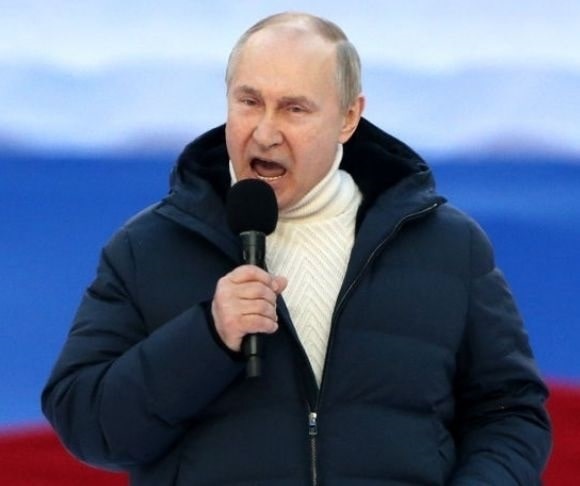
Vladimir Putin (Photo by Getty Images)
The West is trying to answer the question: With conventional weapons and tactics proving not quite up to the job, will Russia turn to chemical, biological, or nuclear weapons in desperation? What was anticipated to be a three-day – four, at the max – campaign to occupy Ukraine is now in its second month. Mired in urban fighting and stalled alomst everywhere in Ukraine, the Russian juggernaut is not proving to be an unstoppable war machine. So are Weapons of Mass Destruction (WMD) really on the table? As Liberty Nation reported, Russian President Vladimir Putin has already placed nuclear-capable missiles close to NATO’s border and not far from Ukraine.
The notion of Moscow employing WMD in its war in Ukraine has been around for several weeks. What prompted this line of thinking was Kremlin officials making pretext claims of the US conducting biological weapons research in Ukraine. According to Moscow-think, this naturally means conclusively that Ukraine is planning a biological or chemical campaign against ethnic Russians. But the logic also smacks of the Biden administration talking themselves into a WMD threat. White House press secretary Jen Psaki explained in a series of tweets on March 9:
“Russia has a track record of accusing the West of the very violations that Russia itself is perpetrating. In December, Russia falsely accused the US of deploying contractors with chemical weapons in Ukraine… Now that Russia has made these false claims, and China has seemingly endorsed this propaganda, we should all be on the lookout for Russia to possibly use chemical or biological weapons in Ukraine.”
While the White House expressed concerns regarding the Putin government’s potential to release chemical or biological weapons on the Ukrainians, NATO is also worrying about this possibility. “Any use of chemical weapons would totally change the nature of the conflict and would be a blatant violation of international law and have far-reaching consequences,” NATO Secretary-General Jens Stoltenberg told reporters at a press conference in Brussels. Additionally, planning is underway in the US to come up with contingency responses to a possible use of WMD. “Those contingencies are expected to be central to an extraordinary session here in Brussels on Thursday, when President Biden meets leaders of the 29 other NATO nations, who will be meeting for the first time — behind closed doors, their cellphones and aides banished — since Mr. Putin invaded Ukraine,” The New York Times explained recently.
As a counter to Russia’s considering WMD for use against Ukraine, the subject of NATO imposing a no-fly zone over the invaded country came up again. Such an operation now would be a closing-the-barndoor-after-the-horse-bolted response. A no-fly zone has little impact on long-range chemical artillery shells fired from inside Russia or from the Belarus-Ukraine border. As Liberty Nation described, “a sizable air armada is necessary to achieve an effective no-fly zone over Ukraine. After all, Ukraine is roughly the size of Texas.” Furthermore, a no-fly zone operation runs the risk of engaging Russia in a much wider conflict neither the US nor NATO seems willing to finish.

Vladimir Putin (Photo by Getty Images)
If Russia employed chemical or biological weapons in Ukraine, it would be an act of desperation. Dispersing such weapons is tricky at best. Generally, they’re spread with aerosol munitions subject to the vagaries of prevailing winds in the case of chemicals. Biological weapons depend as much on person-to-person contact as airborne mechanisms, as China found out in its failure – accidental though it may have been – to contain the COVID-19 virus. Furthermore, there is no indication a Russian escalation entering Chemical, Biological, Radiological, Nuclear (CBRN) warfare would extract Putin’s forces from the messy stalemate in which they find themselves.
If Putin is desperate and foolish enough to start a CBRN level of conflict, the US and NATO cannot be late to meet the threat. So far, however, Putin has been driving the pace and strategy of his invasion while the West merely reacts.
The views expressed are those of the author and not of any other affiliation.
~ Read more from Dave Patterson.
Remember to check out the web’s best conservative news aggregator
Whatfinger.com — the #1 Alternative to the Drudge

